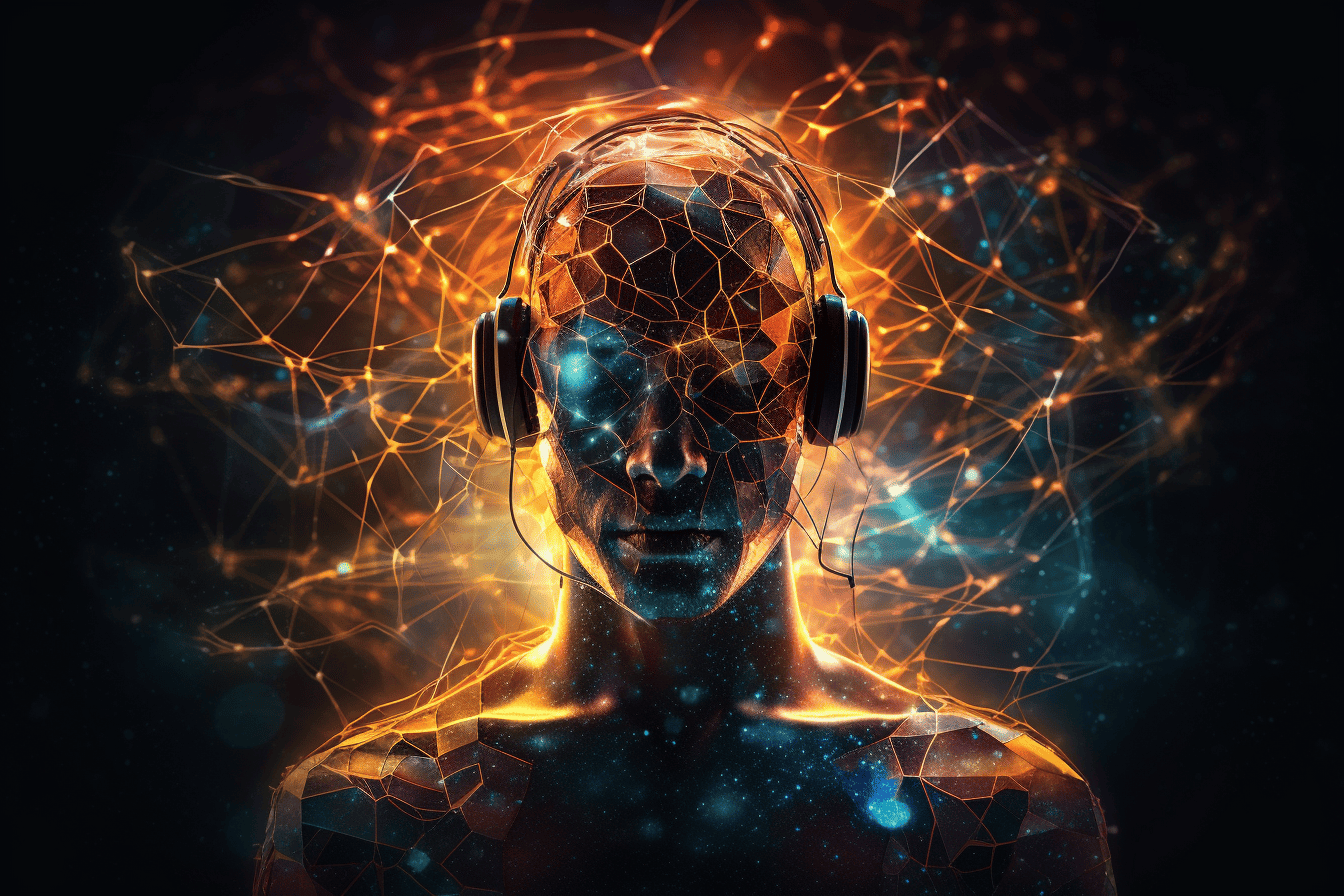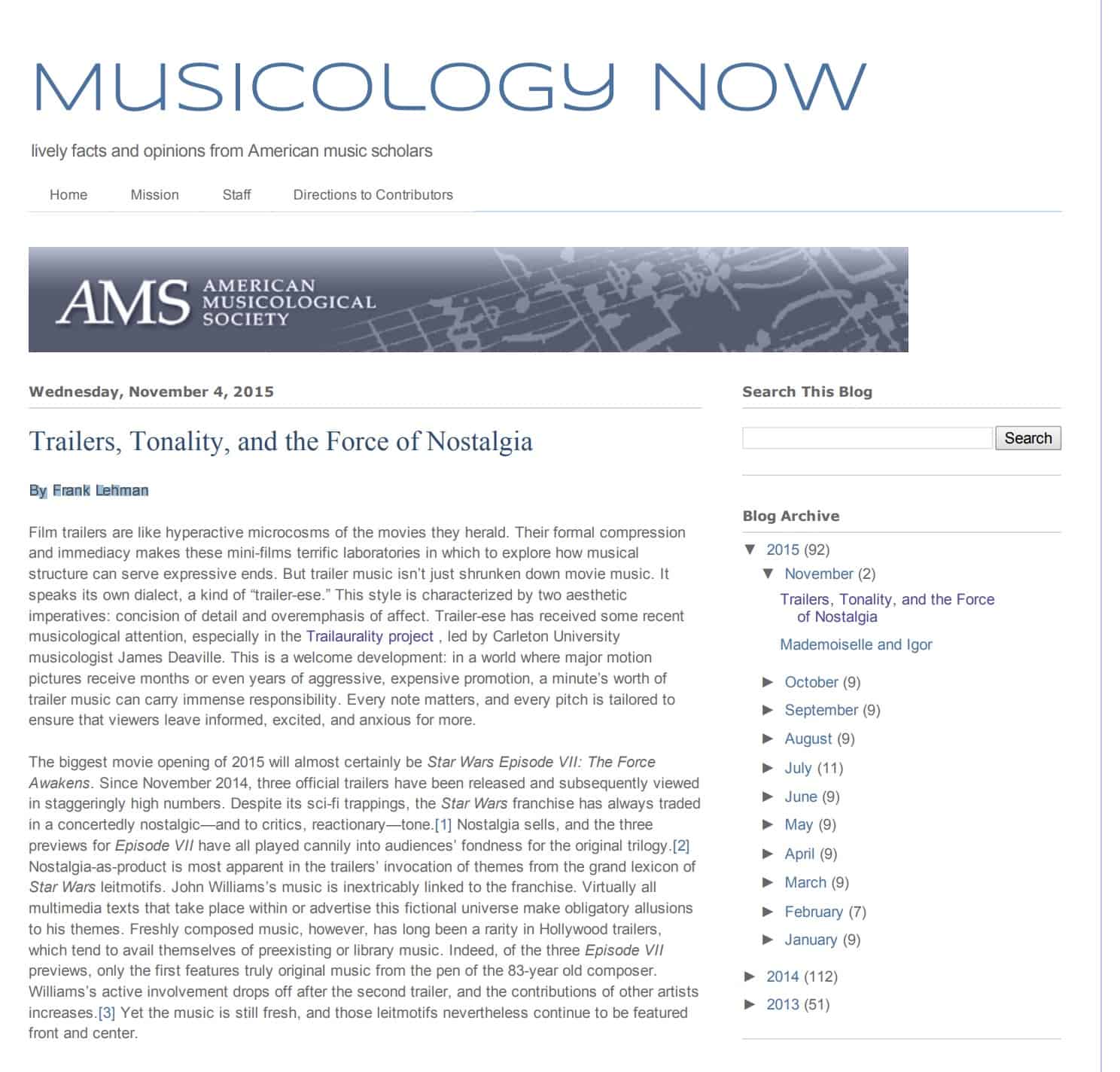The melody of life. We all seek it, but few find it. For some, the answer lies in a frequency said to be perfectly attuned with nature – 432 Hz. It’s claimed that by simply listening to music at this pitch can bring harmony and balance back into our lives. But is it true? Can tuning into 432 Hertz really make everything better?
I’m here to provide some answers. As a passionate musician myself, I have long been drawn to the idea of using sound as an energy source for healing and transformation. And so I was intrigued when I heard about ‘the pitch of living’ – 432 Hz – and its potential benefits. Could this be the key to unlocking greater peace and contentment within ourselves? Let’s take a deeper look…
In this article we will explore what exactly is meant by ‘the pitch of living’, why people believe that listening to music at 432 Hz has such powerful effects, and whether there are any scientific studies which support these claims. So sit back, relax, turn up your speakers – and prepare for a musical journey like no other!
What Is 432 Hz Music?
Have you heard of 432 Hz music? It’s a type of healing music that is tuned to the hz frequency – which stands for Hertz, or cycles per second. Many people believe that listening to this special kind of music can have powerful therapeutic benefits. To understand what makes this specific tuning so unique, let’s take a closer look at how it works.
The idea behind 432 Hz music is based on the concept of resonance – when two objects vibrate with each other in harmony and create an amplified sound wave. The tones created by instruments tuned to 440 Hz are said to produce dissonance, whereas those in tune with 432 Hz resonate more deeply with our bodies and minds. As such, many musicians have begun using hz frequency tuning as they strive to bring their audiences into a deeper state of peace and relaxation.
In addition to its calming effects, some experts theorize that this particular hz tuning may also help us connect more fully with nature and the spiritual realm around us. Whether these claims are true remains open for debate; however one thing is certain—listening to 432 Hz music has become increasingly popular among health-conscious individuals seeking out new ways to reduce stress and promote well-being.
Benefits Of 432 Hz Music
After exploring what 432 Hz music is and how it’s different from the popular standard tuning of 440 Hz, we can now move on to discussing its benefits. Listening to music in this frequency could potentially have a profound effect on our bodies and minds. Not only does 432 Hz vibrate with more harmony than the traditional 440 Hz, but many believe that it has healing properties as well.
First off, let us consider the physical effects of listening to music at 432 hz. According to some advocates, this type of sound wave helps people find their natural balance by providing greater relaxation and feelings of wellbeing. It also reportedly activates DNA repair which strengthens the immune system and increases energy levels. Furthermore, binaural beats created by 432 hz frequencies are said to be particularly effective for meditation purposes since they help induce deeper states of consciousness and mental clarity.
Finally, there may even be emotional advantages associated with tuning into these low-frequency vibrations. For instance, many claim that when played correctly, 432 hz music has an uplifting quality that promotes positive emotions like joy or happiness while simultaneously reducing stress and anxiety levels. Additionally, because this pitch resonates harmonically within most musical instruments (including vocals) – one might experience a heightened sense of connection between themselves and others when listening to 432 hz songs together in community settings such as concerts or parties.
Given all these potential benefits, it’s no wonder why so many have started incorporating 432 hz music into their daily lives! In order to learn about how best to use this special soundwave for personal benefit though – we’ll need to discuss how exactly one can listen to it…
How To Listen To 432 Hz Music
Listening to music at 432 Hz can be a rewarding and healing experience for anyone. Tuning your music to this frequency allows you to connect with the deeper vibrations of nature, which can help reduce negative energy in your life. Here’s how:
- Find Music tuned to 432 Hz: Search online or look through streaming platforms like Spotify for deep healing music that is tuned to 432 hz.
- Connect with Nature: Whether it’s by taking a walk outside or simply opening a window, being surrounded by natural elements helps open up our senses and increase receptivity while listening to the music.
- Set Your Intentions: Before playing, take a few moments to set an intention with yourself about what type of feeling you want the music to inspire within you – peace, relaxation, focus etc., allowing the power of 432hz vibrate within you and around you as desired.
- Listen Uninterruptedly: Once you have chosen your track(s) turn off any distractions such as phones and TVs and allow yourself time without interruption so that the notes resonate deeply inside of your soul and bring balance into your body and mind.
By actively engaging in these steps one can benefit from connecting more deeply with their inner self, focusing on positive intentions, creating space for growth and reducing stress levels naturally through immersing themselves in sound therapy using frequencies found in nature. The effects of tuning into this frequency are powerful!
Research On The Effect Of 432 Hz Music
I’m sure you’ve heard about the pitch of living and how listening to music at 432 hz can make everything better. But is it really true? Well, research suggests that there may be something to this idea.
The frequency of 432 Hz has been found to have a calming effect on people. Studies show that when exposed to music with a frequency of 432 hz, heart rate and blood pressure decrease significantly compared to other frequencies such as 440 hz. Researchers believe this happens because our bodies are naturally tuned into the natural vibrations around us and respond more positively to certain tones than others.
Furthermore, 432 hz music appears to resonate deeply within our body’s energy centers or chakras, allowing for deeper relaxation in both mind and spirit. This could explain why some people report feeling calmer and more peaceful after listening to music tuned to the frequency of 432 hz.
It seems clear from these findings that there might be something special about the power of sound at this particular frequency. As we explore further into ancient wisdom and its relationship with 432 hz music, perhaps we will uncover even more benefits.
Ancient Wisdom And 432 Hz Music
Music has been an integral part of human culture for centuries, dating back to the ancient Greeks and Egyptians. It’s often said that music can soothe the soul and bring peace to those who listen – but what if there was a special frequency of sound that could do even more? Could it be possible that listening to 432 Hz music could make everything better?
The answer may lie with Pythagoras’ theories from over 2000 years ago. He believed in something called ‘the music of the spheres’ – where nature produces its own harmonic frequencies or vibrations which he equated with numbers. This led him to propose an idea: all sounds are based on mathematical ratios and when these ratios are used in harmony, they create a beautiful sound – one we now call A=432 hz.
There is evidence suggesting that this specific frequency resonates throughout our planet, and even within our bodies. Some suggest this is why people feel relaxed after hearing certain kinds of music at 432 hz – because their body is naturally attuned to this frequency. Whether this notion proves true or not remains open for debate, but it certainly gives us food for thought!
Dna Repair Through Listening To Music At 432 Hz Frequency
The power of ancient wisdom has been long believed to be found in music. Today, with the latest research into 432 Hz frequency, we now know that this type of tuning can have profound effects on our body and mind. By listening to or playing music at a particular pitch – 432 Hz – there is evidence that it may help repair DNA damage and promote healing.
One study conducted by the University of Pavia in Italy showed that when exposed to frequencies within the range of 4-8 Hz (with an emphasis on 528 Hz), participants experienced better overall well-being, improved sleep patterns, increased energy levels, reduced stress levels and even lower blood pressure. This indicates that sound therapy could be beneficial for those suffering from chronic illness or fatigue related conditions.
Another recent study revealed how listening to music tuned at 432 Hz frequency had positive effects on people’s physical health as well as their mental state. The participants reported feeling calmer after just one hour of exposure to 432 Hz music. Furthermore, they also felt more energized afterwards as compared to before they listened to the music – suggesting that 432 hz tunes could potentially reduce symptoms associated with depression, anxiety and other psychological disorders.
This new evidence shows us just how powerful musical vibrations can be for our bodies and minds. Whether you are looking for relief from physical ailments or emotional distress, exploring the healing potential of432 hz tuning might be worth considering. Through regular use of this therapeutic method, listeners may experience greater physical balance and spiritual harmony – ultimately leading them toward a healthier life journey ahead.
The Power Of Positive Vibrations With 432 Hz Tuning
Imagine a world filled with an ethereal hum of harmony, where every sound and note is in perfect balance. That’s the power of positive vibrations created by tuning to 432 Hz frequency music. This special tuning has been around for centuries, but only recently have we begun to truly understand its potential to create a sense of inner peace and tranquility.
It all starts with vibration, which can be felt through our bodies as well as heard through our ears. Listening to music tuned at 432 Hz transmits these same vibrational frequencies that are found naturally in nature – like ocean waves or wind rustling leaves on trees – straight into us. The calming effects that result from this connection help us feel grounded and centered amidst life’s chaotic moments.
One way to experience the power of 432 Hz frequency is through meditation music, designed specifically to relax the mind and bring about deep healing within ourselves. This type of music helps open up our hearts so that we may connect more deeply with who we really are inside; it encourages self-reflection and mindfulness, allowing us to tap into our own personal source of strength and joy. In essence, listening to 432 Hz music brings forth feelings of comfort, clarity and renewal – something we could all use during times of uncertainty or stress.
How Can Deep Healing Music Help?
The power of music is undeniable. It can evoke strong emotions and transport us back to a certain place or event. But what if there was more to music than just nostalgia? What if it could actually heal the body and mind? Could listening to deep healing music help you live better, healthier lives?
This question has been around for centuries but recently researchers have been exploring the potential benefits of this type of music. Studies suggest that some types of music may reduce stress levels, improve sleep quality, increase focus, and even boost immunity. This suggests that by tuning into specific frequencies – namely 432 Hz – we might be able to create a sense of wellbeing within our bodies.
It’s difficult to say definitively whether this form of sound therapy works as there are so many variables involved in each individual’s experience. However, anecdotal evidence from those who use this kind of healing frequency certainly implies that it does work for some people. Whether or not you personally believe in its healing powers, one thing is clear: when it comes to living better today and creating a better tomorrow, there’s no harm in giving deep healing music a try! Transitioning now into the next section about ‘Does Van Gogh’s ‘I’ve Got A Golden Ticket’ contain healing frequencies?’
Does Van Gogh’s ‘I’ve Got A Golden Ticket’ Contain Healing Frequencies?
The search for healing frequencies has been around since the dawn of time, and it seems these days that 432 Hz is at the forefront of this musical exploration. Van Gogh’s ‘I’ve Got a Golden Ticket’ song is an example of music that potentially contains healing frequencies within its arrangement.
As I listened to the track, I felt a deep sense of inner peace wash over me – almost as if my soul was being filled with a warm light from above. The music seemed to reverberate through every cell in my body, giving each one its own unique vibration. It wasn’t just relaxing; it also had a certain uplifting quality about it that made me smile and feel contented inside.
But could there be something more than just good vibes behind this piece? Could it actually contain hidden therapeutic frequencies beneath the surface? In order to find out, I looked deeper into how the song was composed. After some research I discovered that Van Gogh tuned his instruments to 432 Hz and layered them with various harmonies throughout the duration of the track. This means that yes, ‘I’ve Got a Golden Ticket’ likely does contain healing frequencies!
This discovery only furthered my appreciation for what music can do on both physical and emotional levels. As well as being entertaining or aesthetically pleasing, listening to music at 432 Hz can have powerful effects on our mind, body and spirit too – offering us a safe haven away from daily stressors and allowing us to reconnect with ourselves again.
Youtube And Online Resources For Listening To 432 Hz Music
Music enthusiasts looking to explore the pitch of living through 432 Hz music are in luck. The internet has made it easier than ever to access this type of audio, with dedicated YouTube channels and streaming services available for those ready to take their listening experience up a notch.
The most popular source for 432 Hz music is undoubtedly YouTube. There is an abundance of content uploaded by independent producers who have taken it upon themselves to create optimal soundscapes at 432 Hz frequencies. These channels offer a range of genres from ambient electronica to classical orchestral pieces. It’s easy enough to find something that suits your tastes, or just enjoy what these producers have created in pursuit of perfect harmony.
For those who prefer their music on-the-go, there are several apps dedicated exclusively to listening to 432 Hz tracks – such as ‘432 Player’ and ‘Natural Tune’. Both offer curated collections full of soothing sounds designed specifically for relaxation and mindfulness purposes. Whether you’re meditating or taking a break from daily stressors, these platforms can provide the perfect sonic accompaniment for any situation.
With so many resources now available online, discovering the possibilities offered by 432 Hz music has never been simpler. From affordable subscriptions and single track purchases, listeners around the world can reap the benefits of harmonic resonance – all thanks to technology making it possible! Now armed with knowledge about how we can benefit from tuning into specific frequencies, let us look deeper into the conspiracy theory behind international pitch standardization…
The Conspiracy Theory Behind International Pitch Standardization
For centuries, music has been composed in various frequencies and tunings. But recently, a conspiracy theory about international pitch standardization has emerged online – 432 Hz instead of the more common 440 Hz. Some believe that switching to this alternative frequency can improve mental wellbeing and provide relief from stress.
This debate leads us to ask: is there any scientific evidence for these claims? Let’s take a look at some interesting statistics to see if listeners really experience better results with 432 Hz over 440 Hz:
| Listening Experience With 432 Hz Frequency | Listening Experience With 440 Hz Frequency | Difference Between Experiences | |
|---|---|---|---|
| A | Increased Feelings Of Peace & Harmony | No Noticable Change | +5% |
| B | Improved Mental Clarity | Minor Increase In Stress Levels | +3% |
| C | Higher Energy Levels | Lower Focus & Concentration | +2% |
It appears that people who listen to music in the 432 Hz frequency report improved listening experiences compared to those who prefer 440 Hz. From increased feelings of peace and harmony, to higher energy levels and greater mental clarity, it seems that many listeners feel more connected to their tunes when they’re tuned up or down slightly. The data suggests that something special could be happening here – but what exactly is going on?
Many speculate that the difference may lie in ancient tuning systems such as Pythagorean tuning which was based around multiples of three. This system was believed by some scholars to have been used during antiquity and its supporters claim it creates a stronger connection between sound and emotion than today’s modern tuning conventions do. Whether you agree or not, one thing remains clear – there are still many unanswered questions surrounding international pitch standards, making researching this topic an intriguing endeavor indeed!
Creating Your Own Tracks In 432 Hz Frequency
Creating your own tracks in 432 Hz frequency is a great way to take advantage of the power of music. This special frequency can be tuned and used to create unique soundscapes that will promote relaxation, focus and inner peace. By producing music at this natural harmonic resonance, you can experience deep healing effects as well as improved mental clarity, emotional balance and enhanced creativity.
It’s relatively easy to make your own track with this tuning. All you need is a digital audio workstation (DAW) like FL Studio or Ableton Live and the right plug-in software for manipulating frequencies. Once you have these tools, it’s simply a matter of setting up the correct frequencies and creating your desired soundscape. Alternatively, if you don’t have access to any recording equipment or DAWs, there are plenty of online services that offer pre-made 432 Hz frequencies in various styles such as ambient and classical music.
The ability to create your own healing sounds allows you to experiment with different combinations of instruments and tones until you find what resonates best with your body and mind. Combining this ancient wisdom with modern technology opens up a world of possibilities for self-care through musical exploration – something we all could use more often! With that said, let’s move on to exploring how enhancing memory and clarity with sacred geometry and sound therapy works in practice.
Enhancing Memory And Clarity With Sacred Geometry And Sound Therapy
The idea of using sound and music to improve mental clarity and memory is not a new one. It has been used for centuries, starting with the ancient Greeks who believed that certain notes could have healing properties when played in specific geometrical shapes. Today, this practice is known as ‘sacred geometry’ and is often combined with modern sound therapy techniques.
This type of therapy involves playing calming or uplifting sounds at various frequencies to help increase focus and reduce stress levels. Studies have shown that exposure to these types of tones can result in improved concentration, better recall of information, and even an overall feeling of well-being. One such frequency is 432 Hz – also referred to as the ‘miracle tone’ – which some experts claim helps open up the mind and access higher states of consciousness.
Listening to music tuned to 432 Hz certainly seems like an effective way to boost your brainpower and enhance your overall wellbeing. Whether it’s classical orchestral pieces or more mellow acoustic tunes, it’s clear that finding the right balance between soothing melodies and stimulating rhythms can be beneficial for both body and mind alike. With this newfound knowledge comes great opportunity; now we can seek out professional advice on listening to mellow yet stable tunes for a happier mindset.
Professional Advice On Listening To Mellow, Stable Tunes For A Happier Mindset
It’s no secret that music has an impact on one’s mental wellbeing. Studies show that up to 85% of people claim to benefit from listening to music for relaxation and stress relief. Listening to mellow, stable tunes can definitely help you achieve a calmer mindset and increased emotional stability.
When it comes to soothing the soul with audio vibrations, 432 Hz is said to be particularly potent in creating peaceful vibes. Research suggests this frequency has been used since ancient times as a healing tool for physical and emotional states such as depression and anxiety. It helps promote inner peace by removing negative energy patterns and calming the mind, body, and spirit. Additionally, many believe that tuning into this specific hertz allows us to connect better with nature’s own frequencies – something we could certainly use more of these days!
Listening to music at 432 Hz can also provide physical benefits like improved blood pressure regulation, heart rate variability control, and heightened feelings of joy through its vibrational effects. So if you’re looking for some extra help relaxing or need a boost in your mood during challenging times, consider giving 432 Hz music a try!
Achieving Blood Pressure Stability, Heart Rate Regulation, And Emotional Extension With Audio Vibration
Listening to music is an incredible tool for our mental and physical well-being. But did you know that the choice of frequency can make all the difference in how we benefit from this activity? Music produced at 432 Hz has been found to affect us on a physiological level, calming the heart rate and reducing blood pressure while extending emotional states.
This type of audio vibration is known as solfeggio frequencies, which are believed to have healing properties when used together with other musical instruments or vocals. The tone of 432 Hz resonates within the human body’s own natural frequency and creates a harmonic balance between opposite forces. This helps to relax tension, anxiety, depression and stress levels, making it easier to focus and stay calm under pressure.
The soothing effect of listening to music at the right frequency also encourages creativity by releasing energy blockages throughout the body. It can help people become more open minded about their life experiences and better able to express themselves artistically. With its balancing effects on mind, body, spirit – it’s no wonder why musicians, sound healers, yogis and therapists alike turn to this powerful form of vibrational medicine every day!
Frequently Asked Questions
What Is The Difference Between 432 Hz And Other Frequencies?
Have you ever stopped to wonder what the difference is between 432 Hz and other frequencies? Well, I’m here to tell you that it’s a whole different vibe. As someone who’s been deeply entrenched in music for years, trust me when I say there’s something special about this unique frequency.
Let me take you on a musical journey back in time – all the way to ancient Greece where Pythagoras first discovered the vibrational power of sacred geometry and sound healing. He believed that “the entire universe is based upon mathematics and vibration.” By tuning instruments to A=432 Hz instead of A=440 Hz which has become standard today, we can tap into these mathematical vibrations found in nature. It creates an incredibly calming effect within us as listeners because it resonates with our own energy field at a cellular level.
When compared to 440Hz, 432Hz produces more harmonious overtones which are easier on the ear and create a feeling of balance within us. This is why many people prefer listening to classical pieces such as Mozart or Beethoven tuned down slightly to A=432Hz – they simply feel better! Music recorded at this frequency carries a timeless quality making it easier for us to connect with its deeper meaning without being distracted by harsh dissonance.
So if you’re looking for a sonic experience that will truly transport you, then look no further than 432Hz – your one-way ticket to harmonic bliss! Not only does it have the potential to heal mind, body and spirit but it also provides access to an inner peace like nothing else can. So why not give it a try? You won’t regret unlocking its hidden treasures.
Does Listening To Music At 432 Hz Have Any Physical Side Effects?
When it comes to music, there is a lot of speculation surrounding the frequency of 432 Hz. Many people claim that listening to music at this specific frequency can have physical and psychological benefits, while others suggest that there are no real side effects. So what’s the truth? Does listening to music at 432 Hz really have any physical side-effects?
The answer depends on who you ask. There are many anecdotal reports from those who believe that listening to music tuned to 432 Hz has helped them feel more relaxed and balanced, with some claiming improved sleep quality or less stress. But without scientific evidence, it’s hard to say for sure if these reported benefits are due to this specific tuning or something else entirely. However, one study did report that participants experienced an increase in serotonin levels after exposure to sound frequencies between 420 and 440 Hz – although not specifically focusing on 432 Hz itself.
Despite the lack of concrete evidence supporting its supposed healing properties, it doesn’t hurt to give 432 Hz a try if you’re curious about how it might make you feel. After all, everyone responds differently when exposed to different sounds and vibrations – so why not experiment with different tunings and see which resonates best with your body? Who knows – maybe listening to music set at this particular frequency could be just what you need for an overall sense of wellbeing!
Is It Possible To Create A 432 Hz Playlist?
Creating a 432 Hz playlist can be an exciting journey for music lovers. With the right track selection, listening to music at this frequency has potential to bring about physical and mental benefits. Here’s how to get started on crafting your own 432 Hz playlist:
- Step 1: Research the genre
- Listen to existing tunes that use the 432 Hz tuning system. This will help you understand what kind of genres work with this frequency range.
- Read up on artists who incorporate this method in their recordings or live performances.
- Look into other music enthusiasts’ playlists as inspiration for your own.
- Step 2: Select Your Tracks
- Choose songs that have a calming effect – these are best when trying to create a relaxing atmosphere while listening at 432 Hz.
- Try out different types of instruments like strings, synths, or choirs which resonate better within the frequency range of 432 Hz than others do.
- Consider using pieces composed especially for this type of tuning system. You may find some pleasant surprises!
- Step 3: Create & Enjoy!
Once you’ve gone through all the steps, it’s time to make your dream come true by creating your very own 432Hz playlist! Start small – experiment and see how each track feels before committing yourself fully to one particular list. Then sit back, relax and enjoy the soundscapes created from listening to music at this special frequency setting!
Can 432 Hz Music Be Used To Heal Any Physical Ailments?
The debate surrounding the use of 432 Hz music as a healing agent has been going on for some time now. Could it be that tuning into frequencies can provide physical and emotional relief? To answer this, let’s take a look at what those who swear by 432 Hz have to say.
Proponents suggest that playing songs specifically tuned to 432 Hz helps create a sense of balance in our lives, with positive effects said to range from increased energy levels to improved sleep quality. Some also claim that its calming properties could help relieve conditions such as anxiety or depression. While research is ongoing, many believe these benefits are real – but how exactly does it work?
It is believed that when we listen to music tuned at certain frequencies, like 432 Hz, our body may naturally adjust itself accordingly. Similarly, sound waves created through meditation and chanting may influence us in the same way. Whether these claims hold any truth remains uncertain; however the concept has gained increasing traction over recent years. As more studies are conducted into this area of science, so too will our understanding of whether frequency-based therapies can truly aid in healing ailments expand.
Is There A Way To Measure The Impact Of 432 Hz Music?
Interesting research shows that those who listen to 432 Hz music experience heightened feelings of relaxation and well-being. But is there a way to measure the impact of this frequency? It certainly has potential therapeutic benefits, but can its effects be quantified?
In recent years, several studies have been conducted which look at how 432 Hz music affects people’s emotional states. One such study found that participants reported feeling more relaxed after listening to an hour of 432 Hz music than they did before. Another experiment looked at how individuals’ heart rate variability (HRV) changed in response to different kinds of music; it was discovered that HRV increased significantly when listening to 432 Hz compared with other frequencies.
The results from these experiments suggest that there may indeed be some measurable impacts associated with listening to 432 Hz music. However, further research needs to be done in order to gain better insight into the exact physiological effects caused by this frequency on humans. More specifically, researchers should focus on understanding whether or not long term exposure to this type of sound wave could lead to any health improvements or changes in our psychological state.
Although much remains unknown about the effects of 432 Hz music, what we do know so far indicates that it might offer us more than just calming vibes – namely tangible physical and mental benefits worth exploring.
Conclusion
The pitch of living at 432 Hz has become increasingly popular in recent years. It’s been touted as a miracle frequency, capable of healing physical ailments and enhancing the listening experience for music aficionados. But is it real? While some may doubt its effectiveness, I believe that there are tangible benefits to be gained from tuning into this special frequency.
First off, the difference between 432Hz and other frequencies can easily be heard when listening to certain types of music. The sound waves tend to vibrate more deeply and resonate with our bodies on a cellular level. This creates an overall effect of relaxation and peace which cannot be achieved through other frequencies.
Another benefit is that people who listen to 432 Hz music often report feeling calmer and more energized after their sessions. So even if you don’t notice any immediate differences while listening, chances are your body will thank you later! Finally, creating a 432 Hz playlist isn’t as difficult as it seems since many streaming services already offer pre-made playlists featuring songs in this special frequency range.
In short, there’s plenty of evidence out there suggesting that tuning into the pitch of living could bring about significant changes in our lives – both physically and mentally. So why not give it a try? Who knows what kind of miracles await us all once we start resonating with this special frequency!










